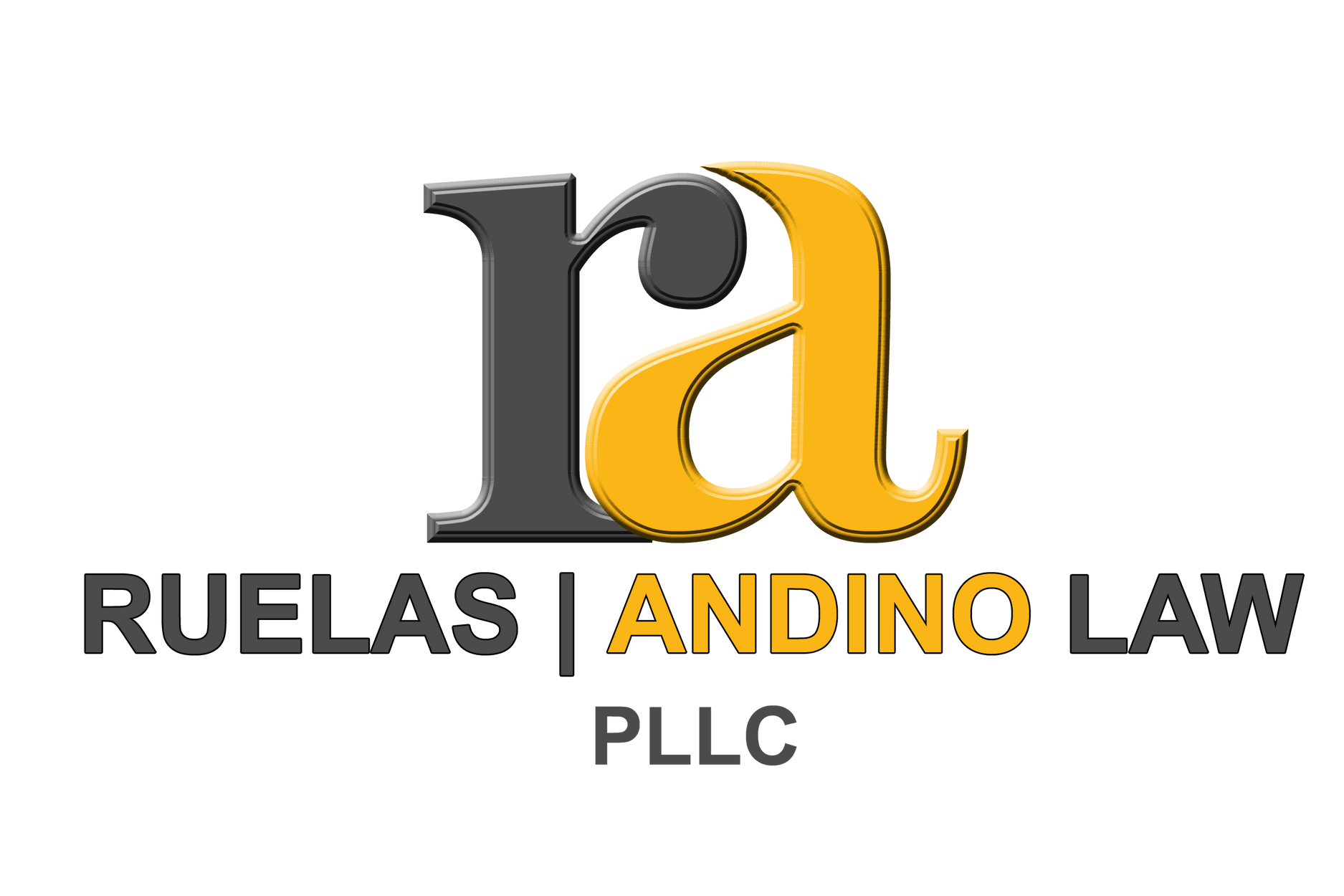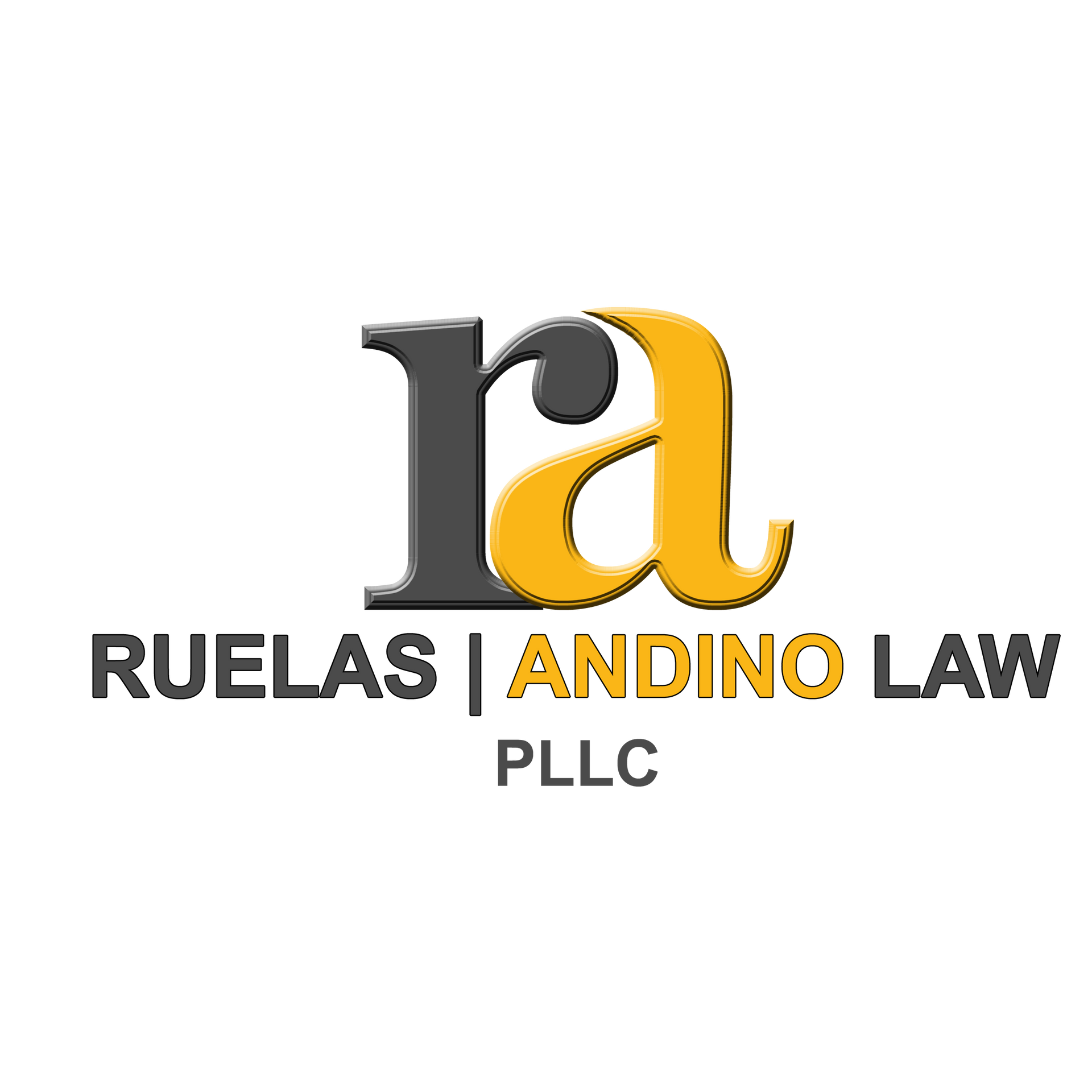Since receiving her license in 2017, Jennifer has been serving clients in Parker County and surrounding counties in the areas of Estate Planning, Probate, Guardianship, Business Entity Formation/Asset Protection, and Real Estate Law. She is passionate about risk mitigation and justice and strives to serve each of her clients with integrity and dedication to achieving her client's goals.
Estate Planning Meets Real Estate: Smart Strategies for Property Transfer
People typically want to leave behind something for their loved ones. For many, the memories and life lessons they pass along are their most valuable legacies. Of course, being able to provide for your loved ones financially is also important. No doubt, you want to be sure all the worldly possessions you’ve worked so hard to gain can benefit future generations of your family.
How you approach the process of providing for your heirs can make a world of difference in the financial aspect of your legacy. Planning well in advance is the key to success, and the benefits of having in-depth legal and financial advice can’t be overemphasized. Proper planning will protect you in the present and your loved ones in the future.
Exploring Asset Protection Strategies
Several asset protection strategies can be effective tools in the estate planning process. Setting aside money in retirement accounts like 401(k)s and IRAs is certainly a smart move. Those types of accounts can help you build wealth for your retirement years, and they’re generally protected against creditors. They offer certain tax advantages as well.
Still, that’s only a small part of the bigger picture. If you have assets beyond conventional retirement accounts, you’ll need to take extra measures to protect them for your own benefit and that of your heirs. Real estate is particularly vulnerable, and the estate planning laws surrounding it are complex. Without help from an experienced estate planning attorney in Texas, it can quickly become more of a liability than an asset.
Living Trusts Versus Wills for Property Transfer
Wills and living trusts are both important components of estate planning. Which one is best for you can depend on the size your estate, how you want your assets divided among your heirs, and many other factors. Take a look at some of the key points of each to better understand their differences.
Living Trusts
A living trust is a trust that is created and funded during your lifetime. It is an arrangement that can allow you, the grantor, to gift real estate and other assets to a trust while you are still alive. The assets you place into the living trust can then be administered for the benefit of your beneficiaries, the people you want to leave them to. With a living trust, you have a certain degree of control over the assets, depending on the type of trust created, such as who will receive the assets, how much they can receive, what triggers the trust to terminate, and so on. If the trust continues after you die, you can maintain a degree of control over your assets thus allowing you to ensure your loved ones are taken care of long after you die.
Every trust created and funded must have at least one trustee. This person, or persons, will be responsible for managing the assets that are held in trust and ensuring your instructions are carried out as outlined in the trust document. He or she will also handle taxes, investments, and other matters as required by the trust document.
Your trustee can be virtually anyone you choose. For most revocable trusts, you, as grantor, will likely appoint yourself to oversee the trust. In a fair number of situations, though, it may be best to appoint someone else. This person can be a trusted friend or family member. However, trusts can be a lot of responsibility so it may be wiser to name an attorney or financial institution as trustee. That will ensure the trust assets are handled impartially and appropriately.
Wills
A Will, on the other hand, is a legal document that dictates how your assets should be divided among your beneficiaries after your death. Beneficiaries can be your heirs, a business, a charity, or anyone else you want to give some or all of your assets to when you die. When drafting your Will, you’ll choose an executor for the Will, and that person will be tasked with collecting your assets, paying your debts and taxes, and making sure your wishes you outline in the document are followed upon your death. Unlike the trustee of a living trust, though, that person won’t be responsible for doing any of these things until after you die.
When you use a Will to transfer ownership of assets to your beneficiaries, you retain ownership of the assets you gift in your Will until your death. In contrast, creating a living trust requires you to transfer ownership of those assets to the trustee of the trust to be managed by the trustee until they’re ultimately passed along to beneficiaries named in the trust. Additionally, a Will cover some things a trust can’t. For example, you can appoint guardians for minor children in a Will but not in a trust.
What are the Benefits and Disadvantages of Wills and Living Trusts?
Both living trusts and Wills have their benefits. Among other things, a living trust can (1) give an heir access to their inheritance whenever the grantor chooses; (2) allow the grantor to restrict a creditors access to a beneficiary’s portion of the trust assets; (3) allow the grantor to control the grantor’s assets long after the grantor has died; and (4) allow grantors and their beneficiaries to forgo having to probate an estate to pass legal title to the assets.
On the other hand, a Will can (1) provide a greater degree over control over a person’s assets while they are still living because the person retains ownership over those assets; (2) allow the person to designate who a guardian over their children should be; (3) allow the person to set up a testamentary trust in their Will to plan for things like a beneficiary who is disabled, unable to manage a large inheritance, or many other reasons; and (4) are typically much less expensive than a trust to create and execute.
In contrast, both trusts and Wills do have their drawbacks. For instance, a living trust (1) can incur a much higher tax rate than if no trust existed; (2) may not protect against creditors if the living trust is not drafted properly; (3) is typically costly to create and can end up virtually useless if not properly maintained; and (4) still requires a Will to ensure that any assets that were not transferred into the living trust get placed into the trust upon the death of the grantor.
Additionally, a Will (1) does not allow assets to change hands until the testator’s death; (2) provides a person with less control over what happens to their assets when they die; (3) must go through the probate process before assets can be transferred to beneficiaries legally, which can take several months or, in some instances, even years; (4) requires minimal maintenance compared to a trust but does incur court costs which can be high; and (5) leaves assets vulnerable to creditors. If you owe creditors when you pass, they’ll be notified of your death and given a chance to make claims against your estate, which could deplete the inheritance you intend to leave to your beneficiaries.
Is a Will or Living Trust Best for You?
Wills and living trusts are recommended for different situations. Which one is best for you depends on your unique circumstances. Living trusts are typically most suitable for large, complex estates and those who simply want to avoid probate altogether and are willing to do the work to maintain the trust. Wills are generally best for smaller, simpler estate planning needs, and they allow you to lay out your wishes regarding more than just how your assets are divided among your heirs. In many instances, these estate planning tools are best used in tandem.
Though a Will and living trust are excellent methods for property transfer, there are several other methods which can effectively transfer real estate to your loved ones. Below is a discussion on several of these types of transfers. For more information on these transfers, it is best to seek the advice of an experienced estate planning attorney.
Gift Deed
Gift deeds are also an option for transferring real estate to loved ones. This entails deeding a property to one or more other persons. It works in much the same way as selling the property, but no money changes hands. With a gift deed, you won’t retain any rights to the property after transferring it to the beneficiary. As with any gift, though, a transfer done by gift deed can incur tax consequences. A tax professional should always be consulted before making such a transfer.
Revocable Transfer on Death Deed (TODD)
As the name indicates, a Transfer on Death Deed automatically transfers ownership of real estate to a beneficiary at the time of the then-current owner’s death. As is the case with a Will or a revocable living trust, a TODD can be changed at any time during a testator’s lifetime. And like a living trust, a TODD can be used to avoid the need to probate. To be effective, a TODD must be in writing, signed, notarized, and filed in the public records in the county in which the property is located.
With a TODD, you retain ownership and control of your property until your death. You can name multiple beneficiaries to pass the property along to if you wish. If a Will gives your property to someone other than a beneficiary listed in your Will, the TODD will control, meaning the beneficiary in a TODD gets the property over the beneficiary in your Will.
Per Texas law, TODDs only apply to real estate located within the state of Texas. Any real estate transferred by TODD remains vulnerable to creditors even after ownership changes hands. When real estate is passed along to beneficiaries via a TODD, the beneficiary takes subject to any encumbrance on the real estate, such as a mortgage or other lien, property taxes, easement, or right of way that may apply. However, a TODD is not subject to Medicaid Estate Recovery, which means Medicaid cannot come after the real estate for reimbursement after your death if you received certain applicable Medicaid assistance during your life.
Family Limited Partnership (FLP) and Limited Liability Company (LLC)
If the real estate you’d like to pass along to heirs is a business or other type of family-owned property, you can do so through a Family Limited Partnership. In this type of arrangement, you would be a general partner and a minority shareholder. That being said, you would maintain control over the business. Your children or other heirs would be majority shareholders but would have no management authority.
Structuring part of your estate as a Limited Liability Corporation can be beneficial as well. Transferring interests in an LLC to your heirs may be simpler than bequeathing individual properties and assets. Holding assets in an LLC may likewise offer more flexibility for dividing particularly complex estates among multiple beneficiaries.
FLPs and LLCs can provide a certain amount of protection against creditors. They may also reduce estate taxes and allow you to avoid gift taxes. Furthermore, you can distribute income from the included assets among shareholders as you like and gradually transfer more shares over time as you see fit. There are several tax and legal requirements to set up and maintain both types of entities. An attorney experienced in business formation working with the appropriate tax professionals can ensure that you structure and run each of these businesses successfully.
Joint Ownership Options and Implications in Estate Planning
If you want to further protect your spouse or other loved ones, as well as your assets, you may want to consider joint ownership options. Beware that some of the options listed below may not be available in Texas and not all of them are right for all situations. You should consult with an experienced estate planning attorney on which option may work for you.
Joint Tenancy with Right of Survivorship (JTWROS)
Joint Tenancy with Right of Survivorship allows multiple people to maintain ownership of a property at the same time. For example, if you and your spouse own your home together, JTWROS means that each of you own a 50% interest in your home as joint owners. When one of you dies, the deceased person’s 50% ownership interest in the home automatically transfers to the surviving spouse.
Most people assume that their spouse will automatically gain ownership of the home they live in together upon their passing. Unfortunately, Texas law requires JTWROS provisions to be specifically stated; they’re not simply granted. Therefore, many surviving spouses find that they did not automatically inherit their deceased spouses’ share in the home. Oftentimes these spouses do not learn this harsh lesson until they attempt to sell the home and find that they cannot do this without going through the probate process or attempting some other alternative process to transfer the property to them. Establishing JTWROS will protect your spouse, or anyone else you list as a joint owner, against uncertainty, disputes, and other issues that often arise after death.
JTWROS gives all owners equal ownership and rights to a property. It also allows heirs to bypass the probate process. Though it’s often used for jointly inhabited homes, it can also be used for investment properties, businesses, and other assets.
Tenancy in Common (TIC)
Another option is Tenancy in Common. This involves granting ownership of a property to more than one person, but it’s a bit different than JTWROS. With TIC, owners may have unequal shares of a property, and each owner can sell or transfer ownership of his or her share at will.
In a TIC agreement, when one owner passes, the surviving owners don’t automatically have survivorship rights. Instead, the deceased owner’s share becomes part of his or her estate and can be Willed to someone else. Tenancy in Common is often used for businesses and investment properties with unrelated owners rather than for family homes.
Life Estate
Establishing a life estate via a life estate deed is yet another option for the transfer of real property. This is a legal arrangement in which one person owns and has the right to live in or use a property for the duration of his or her lifetime. When that person passes, ownership and the rights and responsibilities that go along with it are passed to someone else.
With a life estate, the original owner is known as the life tenant while the remainderman is the one who gains ownership after the life tenant’s death. Neither of the two can sell or transfer their interests in the property without the consent of the other unless the document specifically allows for this. Once ownership is passed to the remainderman, though, he or she may sell or transfer the property as long as doing so doesn’t conflict with any other estate planning measures. Finally, a properly drafted life estate deed can be used to avoid Medicaid Estate Recovery just like a TODD.
Family Vacation Home Succession Planning
Family vacation home succession planning tends to require unique considerations because of the emotional value of these properties and other factors. These properties are often left to multiple heirs, and their distinct needs should be factored into the equation. At the same time, details like heirs’ rights to use the property and maintenance responsibilities must be taken into account.
For family vacation properties, joint ownership options are often recommended. These properties can also be included in Wills and trusts though careful planning may be required to reduce conflicts and other issues. Many people choose to include vacation properties as part of an LLC or FLP due to the added flexibility and tax advantages of these types of arrangements.
Exploring the Tax Implications of Different Real Estate Transfer Methods
Each real estate transfer method comes with different tax implications. With a trust, the estate taxes are paid from the assets in the trust before beneficiaries receive their shares. From there, beneficiaries may be subject to taxes on their inheritances. Beneficiaries generally aren’t required to pay taxes on items Willed to them unless those assets bring in extra income after the fact. Those assets can be subject to estate taxes, though, depending on their value.
Gift taxes may apply to real estate given to loved ones via gift deeds. If you gift property to someone, you’ll be responsible for the gift taxes. Certain exemptions may apply depending on several factors. In some cases, estate taxes apply to jointly owned properties. Those taxes would become the responsibility of the estate or the surviving owner. With a life estate, capital gains and other taxes may apply when ownership is transferred from the life tenant to the remainderman.
Those are only a few of the tax-related points to consider. Tax laws regarding estates, inheritances, and property transfers are extremely complicated. Numerous factors come into play when determining just which taxes and exemptions may apply.
What Is the Most Common Method of Transferring Real Property in Estate Planning?
All the methods mentioned here are popular options for transferring real estate in estate planning. Revocable living trusts are one of the most commonly used. Creating a revocable living trust allows you to maintain control of your estate and use your assets as needed while you’re alive. It also gives you the option to make changes to the trust if you wish.
As mentioned, assets in trust bypass the probate process. That means your beneficiaries may have access to their inheritances more quickly after you pass. Though revocable trusts aren’t exempt from estate taxes and income taxes, proper tax planning can help you and your heirs mitigate the costs in some instances.
Medicaid Planning With Real Estate
Medicaid can be instrumental in protecting your assets for your loved ones. It bridges gaps left by Medicare or your private insurance and may cover the costs of long-term care and other medical needs. Those expenses can burn through the assets you want to leave behind for your loved ones. On the other end of that spectrum, though, your estate and financial status can affect your Medicaid eligibility.
In Texas, Medicaid imposes a $2,000 asset limit for individuals and a $3,000 limit for couples. Some assets, like retirement accounts, personal belongings, and one vehicle per household, are exempt from those limits. Real estate doesn’t fall into that category. Transferring real estate to loved ones using the previously mentioned options can protect your estate as well as your Medicaid eligibility.
Keep in mind that Medicaid has a five-year look-back period in place. It’s designed to prevent applicants from transferring their assets to others to qualify for benefits. As such, it’s important to take action well before applying for Medicaid. If you fail to do so, you could be subject to serious delays or penalties.
Protecting Your Assets and Your Loved Ones’ Futures
If you want to leave behind a legacy for your loved ones, doing so requires careful planning. The laws surrounding estate planning are intricate, and even a seemingly slight oversight could leave your estate vulnerable to creditors, taxes, and many other issues. With legal help and careful attention to detail, you can maximize your assets and protect them for your lifetime and your loved ones’ futures.



